

This week The English Apple Man continues the story of Sampson Morgan's - 'How To Make The Most Of The Land'
Last week's English Apple Man Journal concentrated on Sampson Morgan's Plan for rescuing the depressing state of UK Agriculture by proposing a Government Funded strategy for creating a viable network of small fruit farms across the country.
The English Apple Man has now established the publication was in 1889 and features references to data including prices dated 1884, 1885 and 1887.
![]() This week the Journal will explain why this opportunity made strategic and financial sense.
This week the Journal will explain why this opportunity made strategic and financial sense.
NOTE: If any of my readers have a knowledge of Sampson Morgan please let me know as there is nothing on record to show if his plans were ever put into action
Sampson Morgan's book contains a myriad of data, supporting the creation of a viable redirection of financial resources from promoting the import of fruit and early season crops (apples, pears, tomatoes, salad crops) into financing the establishment of a successful mass of smallholdings across the country.
One might believe that there were no viable fruit farms in the UK at that time, but that was untrue and a number of successful apple and pear growers endorsed the feasibility of Sampson Morgan's plan.
Mr J Smith, one of the largest and most successful Fruit Growers in Kent endorsed Sampson Morgan's proposals
"As one of the contributors to the discussion in the daily press on 'The Plethora of Fruit' and writer of the letter referred to in the pamphlet on 'How to Make the Most of the Land' permit me to say that I agree with the sweeping denunciations of the present system of cropping. I would even suggest that the statements might safely have been more sweeping; for our growers, as a rule, seem satisfied to raise the most common and unprofitable root crops that can be grown, while the foreigner goes in, in every instance, for what you so pithily contend for, the early productions of the glasshouse and the frame, and 'choice' fruits".
Below: Blenheim Orange
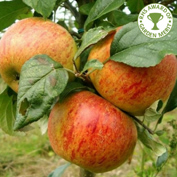 Mr J Smith continues: "I think the inequitable land laws that exist do, in a great degree, tell in a serious manner against the British agriculturist, but, on the other hand, both Landlord and Tenant are to blame!
Mr J Smith continues: "I think the inequitable land laws that exist do, in a great degree, tell in a serious manner against the British agriculturist, but, on the other hand, both Landlord and Tenant are to blame!
"I have, for some years past, secured an independency from the culture of choice varieties of such fruits as you recommend, for which every season I secure good prices. The demand as you say exceeds the supply; that is my experience".
The English Apple Man features just a few of the many excellent eating and culinary apples of the period, and two revered dual purpose apples, Blenheim Orange and Wellington both of which gain prominence in Sampson Morgan's book.
Below: left to right: Cox Orange Pippin, Wellington, Ribston Pippin & Beauty of Kent
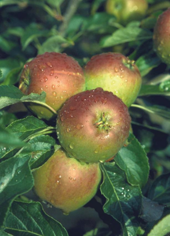
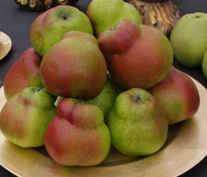
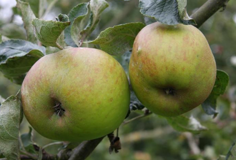
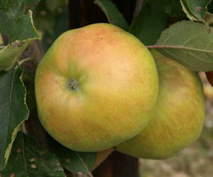
Below: left; Newtown Pippin and right; Baldwin
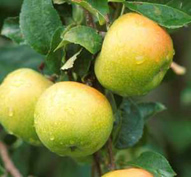
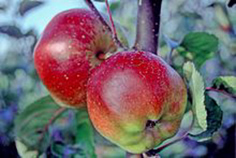 Among the leading varieties imported from the USA were Newtown Pippin and Baldwin - Sampson Morgan emphatically states: "In spite of the references of most writers on the subject, to the celebrated Newtown Pippin which I admit is good, and the spongy and flavourless Baldwin which I submit is bad, I would simply ask what 'Apple' on earth from abroad can be compared to such splendid English varieties of fruit as Lady Hennicker and The Beauty of Kent
Among the leading varieties imported from the USA were Newtown Pippin and Baldwin - Sampson Morgan emphatically states: "In spite of the references of most writers on the subject, to the celebrated Newtown Pippin which I admit is good, and the spongy and flavourless Baldwin which I submit is bad, I would simply ask what 'Apple' on earth from abroad can be compared to such splendid English varieties of fruit as Lady Hennicker and The Beauty of Kent
Below: Lady Hennicker and Cox's Orange Pippin
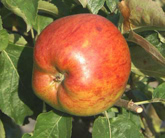
Sampson Morgan continues: Comparing the English and American apples, if anyone in doubt as to the superiority of English over American can easily satisfy themselves upon this point by testing the two samples. "If he (or she) takes, for instance, such as a popular American variety as the Baldwin he will find it utterly impossible to find one apple out of ALL their enormous consignments, either crisp, juicy, or rich in flavour; on the other hand, almost ANY popular variety home-grown will easily satisfy theses requirements"
With regard to colour, Baldwin is well known to be pretty nearly perfect. Yet in Cox's Orange Pippin . when well grown, we have a variety not only rich in flavour and colour, too, but so crisp and luscious that beside the Newtown Pippin is thoroughly matched."
The English Apple Man Comments:
The key to Sampson Morgan's plan was to replace the status quo; the importation of apples and pears from the USA, Canada, Nova Scotia, Belgium and Europe which were superior to the 'majority offered by UK farmers, BUT inferior to 'choice UK varieties like Cox Orange Pippin, Ribston Pippin, et al.
Will fruit culture pay?
The essential element as Mr G. Collins 'the eminent horticulturist at the time described; to grow choice varieties,
"Few will deny, but that the culture of the Apple, is very profitable when such fabulous prices as 8, 10, and 12 shillings per bushel are freely paid for choice fruit and even at these prices demand is insatiable.
Below: left; Pitmaston Duchesse and right; Glou Morceau
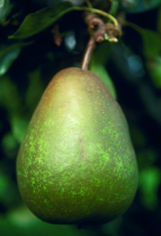
 "The same may be said of Pears, choice samples of which secure process of 2, 4, and 6 shillings per dozen. But mark, all of this refers to choice varieties, NOT the rubbish as usually grown by the home grower!
"The same may be said of Pears, choice samples of which secure process of 2, 4, and 6 shillings per dozen. But mark, all of this refers to choice varieties, NOT the rubbish as usually grown by the home grower!
These must be selected varieties, and none other, such as Pitmaston Duchese and Glou Morceau and other good salebale pears.
For those too young to remember pre-decimalisation. The £ was divided into 240 pennies (d) and 20 shillings (s) so; 2, 4, & 6 shillings equates to 10p, 20p & 30p
Why a pound today is worth only 0.8% of a pound in 1890 - Updated: October 13, 2020
According to the Office for National Statistics composite price index, today's prices in 2020 are 12,834.58% higher than average prices since 1890. This means that a pound today only buys 0.77% of what it could buy in 1890. The British pound experienced an average inflation rate of 3.81% per year during this period, causing the real value of a pound to decrease.
In other words, £100 in 1890 is equivalent in purchasing power to about £12,934.58 in 2020, a difference of £12,834.58 over 130 years.
Conversion Table: Value of a pound today; Initial value Equivalent value; £1 pound in 1890 £129.35 pounds today £5 pounds in 1890 £646.73 pounds today £10 pounds in 1890 £1,293.46 pounds today £50 pounds in 1890 £6,467.29 pounds today £100 pounds in 1890 £12,934.58 pounds today £500 pounds in 1890 £64,672.92 pounds today
Imagine - 6 shillings a dozen (but inflated to £36 per dozen pears) Who said today's fruit is expensive!
Average 'weekly' wage in 1890 - 13s 6d or £87 in 2020
The English Apple Man Summarises.
There have been many changes since the 1890's and one which is very noticeable is the use of the English language back then and today's relaxed delivery.
Example: "I have, for some years past, secured an independency from the culture of choice varieties of such fruits as you recommend, for which every season I secure good prices. The demand as you say exceeds the supply; that is my experience"
Today: "For many years I have made decent profits from growing the quality apples you recommend allowing me a financially secure living"
The questionable policy of Government has not changed as much, however the policy in the 1880's of investment in importation of fruit, salads and vegetables, making importers rich, while farmers were so poor they could barely survive.
Protection v Modernisation - In the 1800's Farmers sought protection from imports, while growing substandard crops when the opportunity of Government to invest in very profitable fruit growing was ignored.
Varieties: Good to see Cox's Orange Pippin which was just establishing as the best eating apple in 1890 is still one of the best flavoured apples today (albeit in prime condition)
Profitability: Clearly those with the nous to grow and market only choice varieties in 1890 were doing very well.
During the period after WW1 fruit growing became more widespread and empires were being built
The questionable policy of Government has not changed as much, however the policy in the 1880's of investment in importation of fruit, salads and vegetables, making importers rich, while farmers were so poor they could barely survive.
During the period after WW1 fruit growing became more widespread and fruit family empires were being built.
Post WW2 growing apples and pears was very profitable and the 'Empires got bigger'
By the mid 1970's Great Britain joined the EU and the 'Common Market' unleashing freedom of access for imported fruit creating downward pressure on our growers financial returns.
In the 1990's many growers were giving up the struggle as imported Gala and Braeburn became more attractive to the consumer than our home grown Cox and other traditional varieties.
By the year 2,000 UK growers were fighting back, by adopting the global varieties Gala and Braeburn and growing them as well, if not better, than anyone else, production volumes and sales volumes grew exponentially 'hand I hand'
In 2020 apple and pear growing in the UK has become a very well structured business increasing sales year on year.
We grow: Gala, Braeburn, Jazz, Cameo to name but a few - all bred overseas but grown to perfection here.
OH! and we still grow Cox's Orange Pippin, sales are now well behind market leaders Gala and Braeburn, but still deliver the finest eating experience when in 'prime condition'
There is a degree of irony that the UK apple and pear industry has faced the competition and progressed again a century apart.
![]() That is all for this week
That is all for this week
Take care
The English Apple Man